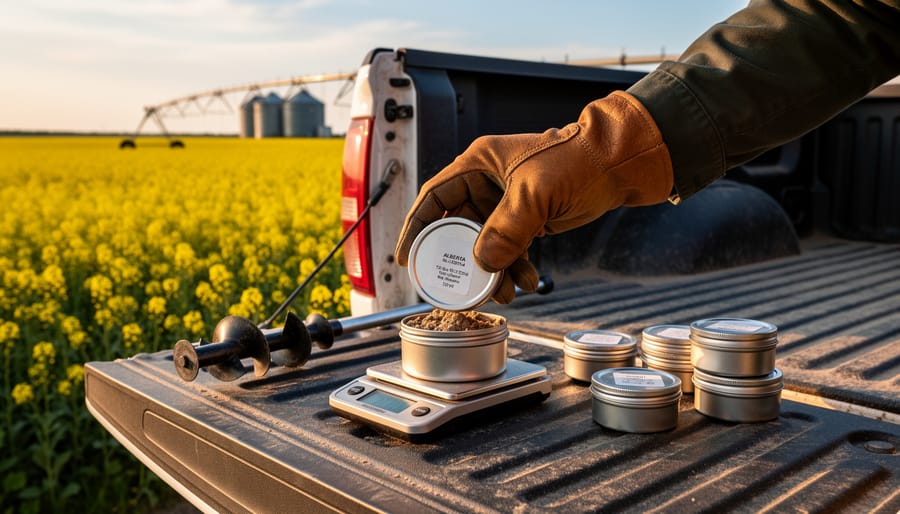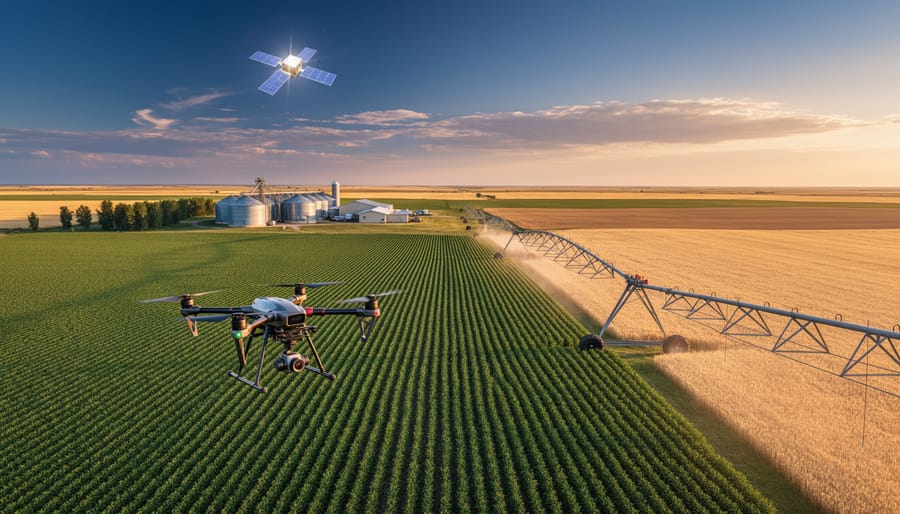Soil and water are the lifeblood of agriculture, yet these precious resources face mounting threats from erosion, pollution, and climate change. The fate of our farms, our food supply, and our planet depends on how we steward the land and the water that sustains it. Soil and water conservation is not just an environmental imperative – it is an existential necessity for farmers and for all of humanity.
Through proven practices like cover cropping, contour plowing, and precision irrigation, farmers have the power to protect and regenerate the soil, conserve water, and build resilient agroecosystems. By working with nature instead of against it, we can harness the innate regenerative potential of the land to grow abundant, nutritious food while safeguarding the long-term health and productivity of our farms.
The path to a sustainable future runs directly through our farm fields. By embracing the principles and practices of soil and water conservation, farmers can lead the way in healing the planet and feeding the world. The time to act is now.
The Importance of Healthy Soil
Soil Structure and Composition
Healthy soil is a complex ecosystem composed of minerals, organic matter, air, water, and living organisms. The mineral component, derived from weathered rock, provides essential nutrients for plant growth. Organic matter, consisting of decomposed plant and animal residues, improves soil structure, water retention, and nutrient availability. Air and water fill the pores between soil particles, allowing roots to breathe and access moisture. Living organisms, such as bacteria, fungi, and earthworms, play crucial roles in nutrient cycling, organic matter decomposition, and maintaining soil structure. The interactions between these components create a fertile environment that supports plant growth, regulates water flow, and stores carbon. Proper management practices, like reducing tillage, planting cover crops, and applying organic amendments, can enhance soil health and contribute to sustainable agriculture in Alberta and beyond. For further insights into improving soil quality, consider exploring the methods outlined in 6 Natural Farming Secrets to Revitalize Your Soil and Boost Yields.

Threats to Soil Health
Several common agricultural practices can degrade soil quality over time. Excessive tilling breaks down soil structure, reducing its ability to retain water and nutrients. Overuse of chemical fertilizers and pesticides can disrupt the delicate balance of microorganisms in the soil, leading to reduced fertility and increased erosion risk. Monoculture farming, where the same crop is grown year after year, depletes specific nutrients from the soil. Leaving fields bare without cover crops exposes the soil to wind and water erosion. By understanding these threats, farmers can adopt practices that prioritize soil health, such as minimizing tillage, using organic amendments, rotating crops, and maintaining vegetation cover.
Water Conservation Strategies

Efficient Irrigation Systems
Efficient irrigation systems are crucial for conserving water and optimizing crop growth in Alberta’s agricultural landscape. Advanced irrigation technologies, such as drip irrigation, micro-sprinklers, and soil moisture sensors, deliver water directly to plant roots, minimizing evaporation and runoff. These precision methods ensure that crops receive the right amount of water at the right time, reducing waste and improving yields. By investing in efficient irrigation infrastructure, farmers can adapt to changing weather patterns, conserve valuable water resources, and maintain the long-term sustainability of their operations. Embracing these innovative solutions not only benefits individual farms but also contributes to the collective stewardship of Alberta’s agricultural community, ensuring a thriving and resilient future for generations to come.
Mulching and Cover Crops
Mulching involves covering the soil with organic materials like straw, leaves, or wood chips to retain moisture and prevent erosion. This protective layer reduces water evaporation, moderates soil temperature, and suppresses weed growth. Cover crops, such as clover, rye, or alfalfa, are planted between main crop cycles to shield the soil from erosive forces. These crops improve soil structure, increase organic matter, and fix nitrogen in the soil. When cover crops are tilled back into the soil, they act as a “green manure,” enriching the soil and enhancing its water-holding capacity. According to a study by Agriculture and Agri-Food Canada, cover crops can reduce soil erosion by up to 90% compared to bare soil. By incorporating mulching and cover cropping into their practices, Alberta farmers can significantly improve soil health, conserve water, and protect their land from degradation.

Sustainable Farming Practices

Conservation Tillage
Conservation tillage practices, such as no-till and strip-till farming, offer numerous benefits for soil health and water conservation. By minimizing soil disturbance, these techniques help maintain soil structure, reduce erosion, and improve water infiltration. No-till farming involves planting crops directly into the residue of the previous crop, while strip-till focuses on tilling only narrow strips where the seeds will be planted. These methods promote the growth of beneficial soil organisms, increase organic matter content, and enhance nutrient cycling. Additionally, conservation tillage can lead to significant water savings by reducing evaporation and runoff. Many Alberta farmers have successfully adopted these practices, reporting improved soil quality, better moisture retention during dry periods, and reduced fuel and labor costs. Transitioning to conservation tillage may require initial investments in specialized equipment and a learning curve, but the long-term benefits for soil health, water conservation, and overall farm sustainability make it a worthwhile consideration for Canadian farmers. More insights can be found in Transform Your Farm with Organic No Till: A Canadian Approach to Boosting Soil Health.
Agroforestry
Agroforestry, a practice that integrates trees and shrubs into cropland, offers a powerful solution for enhancing soil health and water retention. By strategically planting trees alongside crops, farmers can create a more diverse and resilient ecosystem. The deep roots of trees help stabilize the soil, reducing erosion and improving water infiltration. As leaves and branches fall, they contribute organic matter to the soil, enriching its structure and fertility. This natural mulch also helps retain moisture, reducing the need for irrigation. Agroforestry systems, such as alley cropping and silvopasture, have been successfully implemented by innovative agroforestry practitioners across Canada. These living examples demonstrate how integrating trees into agricultural landscapes can not only conserve soil and water but also provide additional benefits like windbreaks, wildlife habitat, and even additional income streams through timber or fruit production. By embracing agroforestry, Alberta farmers can build more resilient and sustainable operations for generations to come.

Resources for Alberta Farmers
Alberta farmers have access to a wealth of resources to support their soil and water conservation efforts. The Alberta Soil Health Institute (ASHI) is a non-profit organization dedicated to promoting soil health and sustainable agriculture practices. ASHI offers educational workshops, field days, and research projects to help farmers improve soil quality and reduce erosion. The Alberta Conservation Association (ACA) is another valuable resource, providing grants and technical assistance for habitat restoration, riparian management, and water quality improvement projects on agricultural lands.
The Government of Alberta’s Environmental Stewardship and Climate Change program offers funding opportunities for farmers implementing beneficial management practices (BMPs) that enhance soil and water conservation. These BMPs include reduced tillage, cover cropping, nutrient management, and off-site watering systems for livestock. The Alberta Environmentally Sustainable Agriculture (AESA) program also provides information, tools, and resources to help farmers adopt environmentally friendly practices.
Local watershed groups, such as the Bow River Basin Council and the Oldman Watershed Council, work closely with agricultural producers to develop and implement watershed management plans that prioritize soil and water conservation. These organizations offer networking opportunities, knowledge sharing, and collaborative projects to address local environmental challenges.
Alberta farmers can also access support from industry associations like the Alberta Wheat Commission and Alberta Pulse Growers, which offer research, extension services, and advocacy related to sustainable agriculture practices. By connecting with these organizations and taking advantage of the available resources, Alberta farmers can play a vital role in protecting the province’s soil and water resources for future generations.
Conclusion
In conclusion, soil and water conservation is vital for the long-term sustainability and productivity of Alberta’s agricultural sector. By implementing practices such as crop rotation, cover cropping, conservation tillage, and efficient irrigation systems, farmers can protect and enhance the health of their soil and water resources. These practices not only benefit the environment but also contribute to the economic viability of farming operations by reducing costs, improving yields, and ensuring the land remains productive for future generations. Alberta’s government and agricultural organizations offer valuable resources, grants, and support to help farmers adopt these sustainable practices. As stewards of the land, it is the responsibility of every farmer to prioritize soil and water conservation. By working together as a community and sharing knowledge and experiences, Alberta’s farmers can lead the way in promoting sustainable agriculture and preserving our precious natural resources for generations to come.











